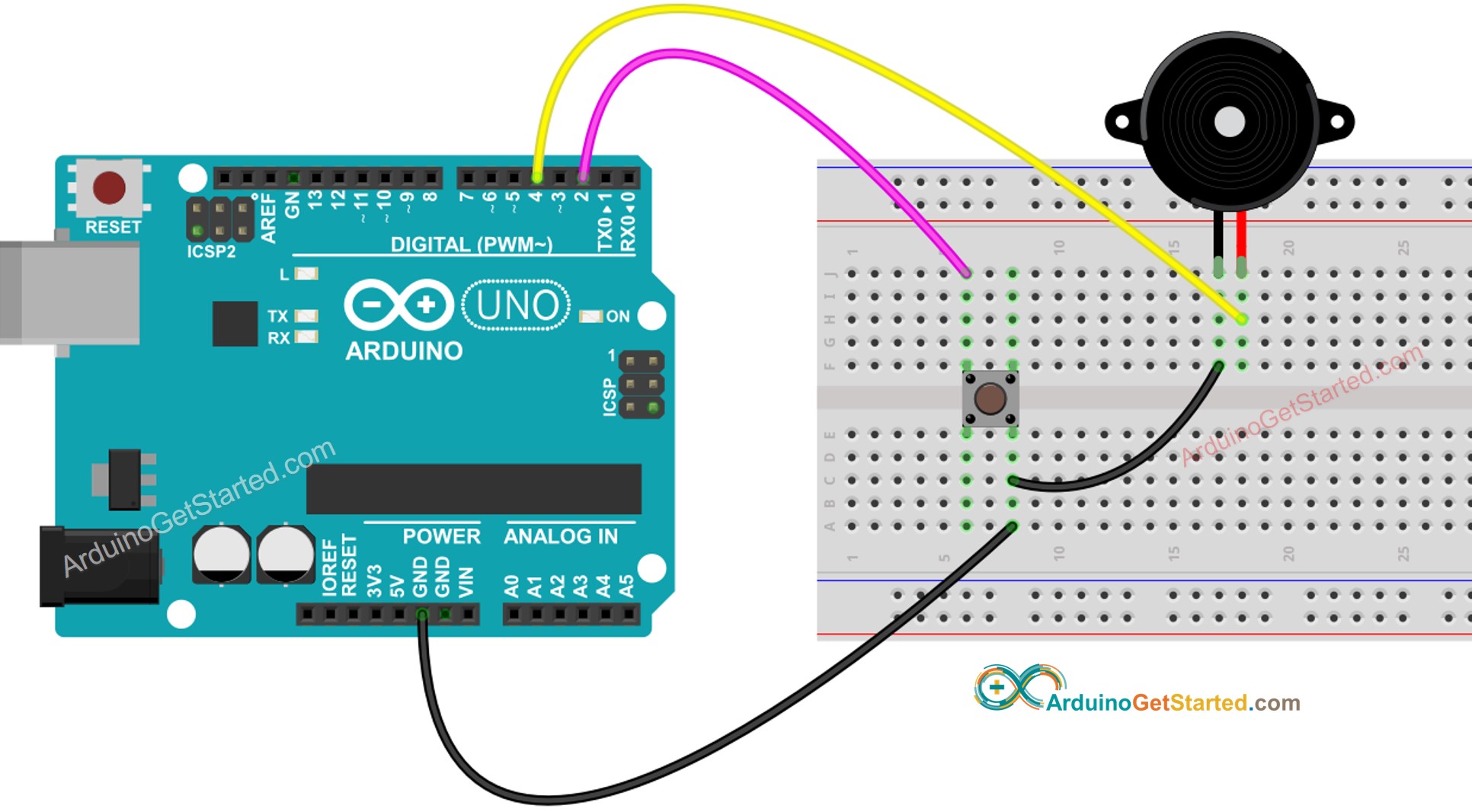

Using the Arduino, you can make sounds with a buzzer by using different frequency electrical pulses. Connect the short pin of the buzzer to the Arduino's ground pin (GND) and the other end to digital pin 9. If your buzzer has a sticker on top of it, pull the sticker off.

Buzzer arduino price how to#
Read more: Obstacle Avoidance Robot with Ultrasonic Sensors using Arduino How to use the Arduino buzzer?

By changing the frequency on the positive pins of the Arduino buzzer, we can create a melody of the song. The different frequencies generate different tones. When a square wave of a certain frequency (and 50% duty cycle) is applied on the Positive (+ve) pin of the Arduino buzzer generates tones. When the Positive pin is connected to the 5 Volts pin of the Arduino directly, the buzzer produces a sound of constant frequency. E-outstanding 2pcs Piezo Electronic Buzzer Beep Tone Alarm Ringer Continous Sound 3-24V Buzzer Electromagnetic for Arduino DIY Buzzer, Black. The Positive pin (+ve) of the Arduino buzzer has to be connected to the VCC of Arduino and the Negative pin (-ve) has to be connected to the GND pin of the Arduino. Read more: Interfacing GPS Module with Arduino How does the Arduino Buzzer work? In this blog, we will produce different sound tones using a buzzer by applying different frequency electric pulses. As it is lightweight, simple in construction, typically a low-cost product that can generate different sound tones of different frequencies and does not require a separate oscillating circuit. This file contains all the pitch values for typical notes. External dimensions Characteristics Outer diameter (mm) Height (mm) Pitch (mm) Sound pressure (dB(A)/10cm) Frequency (kHz) Input voltage (Vo-p)Rectangular wave PS12 Type PS1240P02BT 12.2 6.5.
Buzzer arduino price code#
The piezoelectric buzzer is most commonly used with the Arduino. The code below uses an extra file, pitches.h. buzzer Standard microphone AMP Filter (A curve) Recorder Frequency counter Measuring distance 10cm Anechoic chamber Testing input voltage Type Part No. The buzzers are of different types such as Mechanical buzzers, Electromechanical buzzers and Piezoelectric buzzers. The Arduino buzzers are most commonly used as beepers in any system, Alarm devices, timers, security systems and to produce sound on confirmation of user input in many systems. Alarms, Buzzers, and Sirens are devices that produce an audible signal usually like a steady high-pitched hum that is encased within a molded housing. The Arduino buzzer can be directly connected to the Arduino and produce different tones by giving different frequency electric pulses to the buzzer. The Arduino buzzer is a device that produces sound when an electric current is passed through it. Then the negative side to a 1k ohm resistor.An Arduino Buzzer is basically a beeper. *Ĭonnect the positive side of the Buzzer to pin 3, Just press the “Copy” button on the top right of the code text field for it to automatically highlight the whole code for you. Electronic Spices Dc 3-24v 85 Db Active Piezo Buzzer With. Electronic Spices 27 And 35 Mm Piezo Ceramic Elements Sounder. There is a pretty huge amount of code in this Sketch. Big Buzzer With Small Enclosed Piezo Electronic Buzzer Alarm 95db. Using an Arduino Unoīelow is an illustration of how to connect the buzzer and resistor to an Arduino Uno.īelow is an illustration of how to connect the buzzer and resistor to an Arduino Nano. Another idea is using a potentiometer instead of a resistor to act as a volume controller! For this tutorial we’ll just be using a 1 k ohm resistor. But you can also lower the resistance to get a little louder sound, and keep the sound quality. You can actually do without the 1 k ohm resistor! If you connect without the resistor, the buzzer will be a lot louder, and the sound quality might degrade. So basically the buzzer, 1 k ohm resistor and Arduino should be connected like this:Īrduino digital pin 3 –> Buzzer –> 1 k ohm resisotor –> Arduino ground(GND) pin. Remember to connect the buzzer the right way, the buzzer has positive and negative pins! Connect the other side of the 1 k ohm resistor to ground(GND) pin on the Arduino. If you have an Arduino Nano, look the the image in “Using an Arduino Nano”.Ĭonnect the positive side of the b uzzer to digital pin 3, then the negative side to a 1k ohm resistor. If you have an Arduino Uno(which most people have), connect the components with the help of the image below. 1 k ohm resistor(any resistor between 333 ohm to 1 k should be fine in this project).An Arduino(I used an Arduino Nano, any other is fine).I modified the code posted by Dipto and added the PWM-pitches in directly into the Sketch, so you don’t have to mess around with Arduino libraries! Today I found a complete post on how to play Super Mario Bros theme song on a piezo buzzer! It’s very simple and fun, and great as a beginner Arduino project.Īll fame goes to Dipto Pratyaksa for making the Sketch code and sharing it with us!


 0 kommentar(er)
0 kommentar(er)
